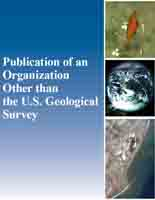Variable breeding phenology affects the exposure of amphibian embryos to ultraviolet radiation
Links
- More Information:
- Download citation as: RIS | Dublin Core
Abstract
Reduced water depth in dry years has been proposed to interact with ultraviolet- B (UV-B) radiation and a pathogenic fungus to cause episodes of high mortality of amphibian embryos. Observations of breeding phenology of boreal chorus frogs (Pseudacris maculata) in Colorado from 1986 to 2001 show that dry years result in earlier breeding. The earliest and latest dates of maximum calling activity by males were 20 May and 16 June, and the date of maximum calling was strongly related to the amount of snow accumulation during the winter. Surface UV-B flux, estimated from satellite-based measurements, was positively related to date of maximum calling. In dry years, surface UV-B during calling was reduced by an amount similar to that attributed to reduced depth. Although there was a significant trend of increasing UV-B from 1978 to 2001 on the average date (2 June) of maximum calling activity, there was no relationship between year and surface UV-B at actual dates of maximum calling. Exposure to extreme temperatures is an alternative explanation for increased mortality of amphibian embryos in shallow water.
| Publication type | Article |
|---|---|
| Publication Subtype | Journal Article |
| Title | Variable breeding phenology affects the exposure of amphibian embryos to ultraviolet radiation |
| Series title | Ecology |
| DOI | 10.1890/0012-9658(2002)083[2958:VBPATE]2.0.CO;2 |
| Volume | 83 |
| Issue | 11 |
| Year Published | 2002 |
| Language | English |
| Publisher | Ecological Society of America |
| Contributing office(s) | Northern Rocky Mountain Science Center |
| Description | 6 p. |
| Larger Work Type | Article |
| Larger Work Subtype | Journal Article |
| Larger Work Title | Ecology |
| First page | 2958 |
| Last page | 2963 |
| Online Only (Y/N) | N |
| Additional Online Files (Y/N) | N |


